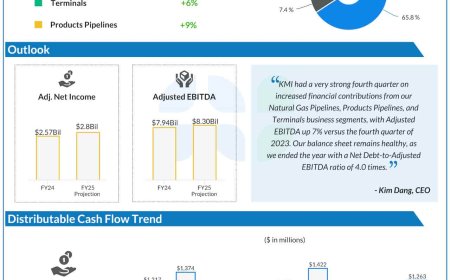USD / CAD - Loonie At Covid Lows
- Political upheaval in Ottawa - Fed dials back rate cut outlook - Spectre of Trump haunting global markets. The Canadian dollar is being pummeled as a confluence of events combine to drive it down to Covid-era levels. October Slide: The Start of the Downturn The Loonie began its slide in early October, coinciding with the final leg of the US presidential election saga. The decline accelerated after Donald Trump won a decisive victory, even capturing the popular vote. Things took a nastier turn when Trump regained the presidency. One of his first declarations was the reintroduction of tariffs—10% on all imports—with Canada and Mexico singled out for special attention. He went further, threatening 25% tariffs on both countries unless they controlled the flow of illegal drugs and immigrants into the US. His remarks triggered another wave of selling pressure on the Canadian dollar. The Bank of Canada Adds to the Pressure The Bank of Canada (BoC) played a major role in the Loonie’s decline when it cut its benchmark interest rate by 50 basis points to 3.25% on December 11. This move wasn’t a total surprise, given a series of weak economic reports that showed the Canadian economy was floundering. Q1 GDP growth was far below the BoC’s October projections, and policymakers expect Q4 to be similarly weak. Surging unemployment added to the bleak picture, with the rate jumping to 6.8% from 6.5%. Freeland’s Resignation Shakes Confidence The situation came to a head on Monday, December 15, when Finance Minister Chrystia Freeland unexpectedly resigned just hours before presenting the government’s Fall Economic Statement. Her resignation letter was a blistering critique of Prime Minister Justin Trudeau’s government, accusing it of failing to take Trump’s tariff threats seriously. Freeland wrote: “The government’s focus was on costly political gimmicks which we can ill afford, and which make Canadians doubt that we recognize the gravity of the moment.” A Devastating Fall Statement Later that day, the Fall Statement projected a $60.1 billion deficit—more than a 50% increase from the $40.1 billion forecast in March. The Loonie took it on the beak. The Fed Delivers the Final Blow Before markets could recover, the Federal Reserve delivered another blow. The Fed cut rates by 25 basis points to 4.25%, as widely expected. However, the dot-plot projections showed only two more rate cuts in 2025, causing the US dollar to surge. The Canadian dollar was collateral damage. To add to the pain, US 10-year bond yields spiked to 4.525% from 4.40%, widening the Canada-US 10-year yield spread to -126.4 basis points from -119.0 the previous day. Is There Hope for the Loonie? Is it all doom and gloom for the Loonie? The short answer is “yes,” at least until January 20, when Trump gets inaugurated. The Canadian government appears ill-equipped to deal with the incoming US administration. It doesn’t help that Mr. Trump takes great joy in mocking and belittling Justin Trudeau publicly. In addition, it is year-end. Many banks and businesses have, or are, closing their books for 2025, which drains liquidity and increases FX volatility. The Canadian dollar technical outlook is bearish and looking for a test of the 64.5-cent level (USDCAD 1.4815). The Canadian dollar may be at Covid-era lows, but just as a vaccine cured the virus, a strong dose of economic resilience, a new government, and rising commodity prices could revive its strength.

- Political upheaval in Ottawa
- Fed dials back rate cut outlook
- Spectre of Trump haunting global markets.
The Canadian dollar is being pummeled as a confluence of events combine to drive it down to Covid-era levels.
October Slide: The Start of the Downturn
The Loonie began its slide in early October, coinciding with the final leg of the US presidential election saga. The decline accelerated after Donald Trump won a decisive victory, even capturing the popular vote.
Things took a nastier turn when Trump regained the presidency. One of his first declarations was the reintroduction of tariffs—10% on all imports—with Canada and Mexico singled out for special attention. He went further, threatening 25% tariffs on both countries unless they controlled the flow of illegal drugs and immigrants into the US. His remarks triggered another wave of selling pressure on the Canadian dollar.
The Bank of Canada Adds to the Pressure
The Bank of Canada (BoC) played a major role in the Loonie’s decline when it cut its benchmark interest rate by 50 basis points to 3.25% on December 11.
This move wasn’t a total surprise, given a series of weak economic reports that showed the Canadian economy was floundering. Q1 GDP growth was far below the BoC’s October projections, and policymakers expect Q4 to be similarly weak. Surging unemployment added to the bleak picture, with the rate jumping to 6.8% from 6.5%.
Freeland’s Resignation Shakes Confidence
The situation came to a head on Monday, December 15, when Finance Minister Chrystia Freeland unexpectedly resigned just hours before presenting the government’s Fall Economic Statement.
Her resignation letter was a blistering critique of Prime Minister Justin Trudeau’s government, accusing it of failing to take Trump’s tariff threats seriously. Freeland wrote: “The government’s focus was on costly political gimmicks which we can ill afford, and which make Canadians doubt that we recognize the gravity of the moment.”
A Devastating Fall Statement
Later that day, the Fall Statement projected a $60.1 billion deficit—more than a 50% increase from the $40.1 billion forecast in March. The Loonie took it on the beak.
The Fed Delivers the Final Blow
Before markets could recover, the Federal Reserve delivered another blow. The Fed cut rates by 25 basis points to 4.25%, as widely expected. However, the dot-plot projections showed only two more rate cuts in 2025, causing the US dollar to surge. The Canadian dollar was collateral damage.
To add to the pain, US 10-year bond yields spiked to 4.525% from 4.40%, widening the Canada-US 10-year yield spread to -126.4 basis points from -119.0 the previous day.
Is There Hope for the Loonie?
Is it all doom and gloom for the Loonie? The short answer is “yes,” at least until January 20, when Trump gets inaugurated.
The Canadian government appears ill-equipped to deal with the incoming US administration. It doesn’t help that Mr. Trump takes great joy in mocking and belittling Justin Trudeau publicly.
In addition, it is year-end. Many banks and businesses have, or are, closing their books for 2025, which drains liquidity and increases FX volatility. The Canadian dollar technical outlook is bearish and looking for a test of the 64.5-cent level (USDCAD 1.4815).
The Canadian dollar may be at Covid-era lows, but just as a vaccine cured the virus, a strong dose of economic resilience, a new government, and rising commodity prices could revive its strength.











































